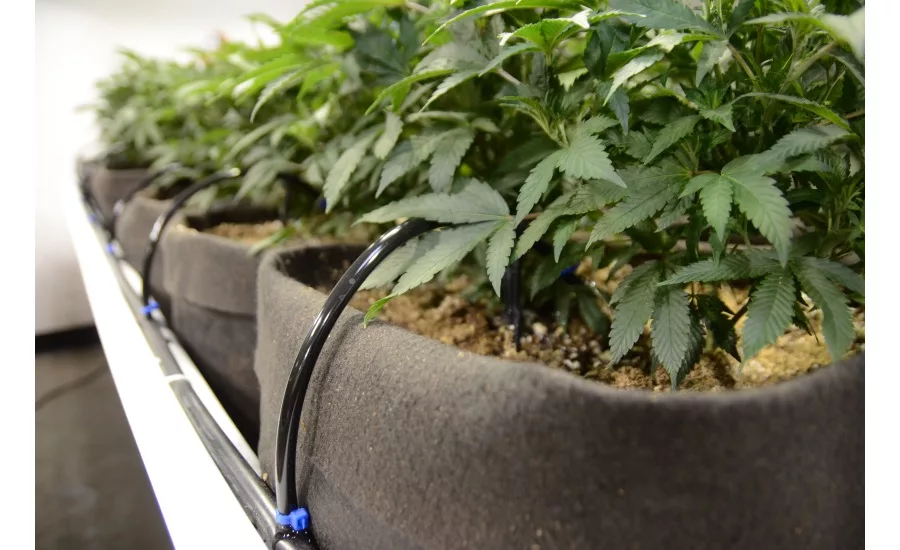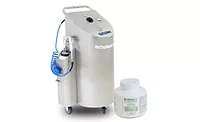Aligning cannabis edibles and beverages production with FDA standards

Cannabis edibles and beverages are a new market for some states; others have been slowly honing their new products for years now. However, there is a need for more guidelines from the FDA, to regulate this market.
Streamlining and unifying regulations
“There is a glaring need for unified [regulations] in order to adequately protect public health and consumer safety,” says Lezli Engelking, founder, FOCUS: The Cannabis Health and Safety Organization, Arizona.
“Sadly, from a regulatory perspective, the effort is pretty much non-existent right now. The industry recognizes this, as do patients and consumers.There are even a number of states who have tried to make this happen; however without federal involvement, their efforts have primarily been futile,” she says.
The real issue exists in the “standoff” around who should handle the task, Engelking elaborates.
“Government agencies want Congress to handle it, while Congress continues to wait for direction from federal regulatory bodies.”
When it comes to federal regulation for hemp/CBD products [the FDA is] now drafting their regulations, though it's unsure as to when they will be completed for public comment, or when they will be initiated, says Kimberly Stuck, founder/CEO, Allay Consulting LLC, Denver.
Looking for quick answers on food safety topics?
Try Ask FSM, our new smart AI search tool.
Ask FSM →
“When it comes to THC Cannabis, we are still a ways off from legalization, but I believe that the currently being written hemp/CBD product FDA regulations will be very similar except for a few nuances like childproof packaging and potency testing of end product. When it comes to food safety implications, all cannabinoid oils have the same risks, so why reinvent the wheel?” she says.
As of right now some local and state health departments are regulating cannabis, but only some of them, Stuck notes.
“The vast majority of cannabis products still remain unregulated by a public health authority. Until the FDA regulations come out, many companies are left with little-to-no food safety practices at all, unless they decide to self-regulate by having 3rd party FDA audits or by getting a certification,” she explains.
Many companies have realized this and [want] to do something that proves they are following safe food safety practices, so they have been attempting to get cGMP Certified, Stuck says.
“This is an excellent option to self-regulate and prove that your company is doing the right thing for your consumers. Both high THC and CBD cannabis products are able to get these certifications at this time.”
Aligning protocols with FDA guidelines
As the regulated cannabis industry began, states initially did not include any specific food/manufacturing guidelines whatsoever, says Engelking.
“This was one of the primary reasons I founded FOCUS—to assure regulatory programs had adequate protections for health and safety and operators had guidance on how to run their businesses successfully, through standards,” she says.
Early cannabis regulatory programs in the US defined the quality of cannabis solely through testing results, Engelking adds.
“However, as more and more states have legalized cannabis for medical or recreational use, the industry has grown, more labs have been established, and new products have flooded the market. As this occurred, the number of discrepancies within testing results, and the number of unsafe products reaching the shelves, also grew,” she notes.
Engelking says that this situation caused states that have more recently legalized cannabis for medical or recreational use to realized what W. Edwards Deming stated many years ago: “We must cease dependence on inspections to achieve quality."
“Even as states have begun to recognize and understand the need for both quality assurance and quality control, when it comes to writing laws and regulations, their advisers do not typically have a background in quality, and thus most regulations still miss important some critical aspects of quality management," she says.
Stuck says that many local and state health departments are taking current regulations for retail/wholesale food manufacturing and applying it to the cannabis industry.
“None of the states are really talking or aligning that I know of, and many jurisdictions aren't regulating cannabis products at all. I think many of them are hoping for federal legalization to get guidance, but that may be a ways off and they should be regulating now to prevent outbreaks and potentially contaminated products being on the market.”
Gaps in food safety
Engelking says that the following are some of the biggest gaps in food safety today, regarding production of cannabis food and beverages:
- HACCP
- CAPA
- SSOPs/Cleaning and Sanitation Effectiveness
- Supplier Qualification
- Stability Testing
- Storage/Transport
- Training
Stuck agrees that there are a few gaps.
“The handling of the plant prior to sell/processing that sometimes get forgotten like proper curing/water activity. Testing is lacking in many states—usually heavy metals, mold, or mycotoxin testing—and pasteurization steps for certain oil products, properly sanitizing with food safe sanitizers, are just some I see often,” she says.
Most cannabis manufacturing facilities lack very basic things like enough hand sinks, hot water, and in place sanitizer, Stuck mentions.
“I would say that 80 percent of the industry is not ready for FDA regulation at this time, and would recommend at least getting a 3rd party FDA audit to see where they are at when it comes to food safety.”
Developing a food safety plan
Companies working in or considering entering the cannabis food and beverage production should develop a food safety plan, in order to position themselves as well as possible for the future.
Stuck says that having a food safety plan is a great starting point.
“Most companies don't even have one in place, and if they do, most of their employees aren't properly trained in it or are not following it. Getting 3rd party FDA Compliance audits is a great way to make sure your company is at least following the most basic food safety guidelines, then looking at becoming cGMP Certified is the next step,” she recommends.
“If you are just starting out, we have many companies that just add 3rd party audits and cGMP Certification to their budget so that they have a definite path to food safety compliance. I also would recommend making sure your staff has proper food safety training as well—your employees need to know and understand basic food safety practices in order for your company to be successful,” Stuck adds.
So many cannabis companies begin building their business without first considering quality and safety, says Engelking.
“Without fail, not addressing quality and safety upfront, ends up costing exponentially more,” she notes.
Whether due to the use of improper materials, poor facility design, processing issues, workplace accidents/injuries, recalls, mergers, or acquisitions: eventually all cannabis companies are forced to address it, she says.
“Quality and safety plans should be a line item in every cannabis budget, out of the gate, regardless of the type of operation.”
Related: Slideshow: Aligning cannabis edibles and beverages production with FDA standards









